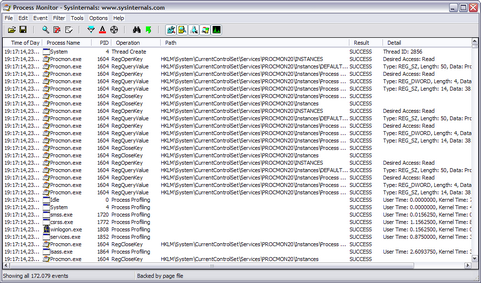 Maandag is er een nieuwe versie van Sysinternals Suite verschenen. Dit pakket is een verzameling van handige tools waarmee systemen kunnen worden beheerd en uitgebreide informatie over de computer ingewonnen kan worden. Het pakket is ook bruikbaar voor troubleshooting en diagnose. Sysinternals Suite is door Mark Russinovich en Bryce Cogswell geschreven, in eerste instantie voor Sysinternals en tegenwoordig voor Microsoft. Enkele voorbeelden zijn Process Explorer, Bginfo, Contig en Diskmon. In totaal gaat het om een verzameling van maar liefst 65 verschillende tools. Sinds de vorige release zijn de volgende componenten bijgewerkt:
Maandag is er een nieuwe versie van Sysinternals Suite verschenen. Dit pakket is een verzameling van handige tools waarmee systemen kunnen worden beheerd en uitgebreide informatie over de computer ingewonnen kan worden. Het pakket is ook bruikbaar voor troubleshooting en diagnose. Sysinternals Suite is door Mark Russinovich en Bryce Cogswell geschreven, in eerste instantie voor Sysinternals en tegenwoordig voor Microsoft. Enkele voorbeelden zijn Process Explorer, Bginfo, Contig en Diskmon. In totaal gaat het om een verzameling van maar liefst 65 verschillende tools. Sinds de vorige release zijn de volgende componenten bijgewerkt:
Process Monitor v2.04:
This update shows file mapping operations in basic mode, adds more translations of error numbers to text, fixes a bug that limited support for more boot log files larger than 4GB, and displays version numbers using the same formatting as Windows.
TCPView v2.54:
Fixes bugs that prevented the display of IPv6 TCP endpoints and the correct display of IPv6 UDP endpoints
VMMap v1.02:
Now shows all image subsections, even if they reside within the same allocation region. It also fixes a bug in image name sorting and makes the UAC elevation smoother on 64-bit Windows.
Testlimit v5.01:
This fixes a bug in the implementation of the -d option.
Notmyfault:
Updated with options to leak paged or nonpaged pool, and it now frees leaked pool on exit.
Sigcheck v1.6:
This update adds checking for .NET strong signatures and extends the output of the -i option, which shows the image signers, to also print the path of the catalog that stores a file's signature.
Strings v2.41:
This Strings update fixes a bug that sometimes resulted in the omission of strings that crossed 64K boundries in a file and it now prints strings in the same order they appear in the file.
VMMap v1.01:
This release fixes a bug in the identification of heap memory and a bug that prevented VMMap from working on 64-bit Windows XP and 64-bit Windows Server 2003.
VMMap v1.0:
VMMap is a new utility for analyzing process address spaces and working sets. Aimed primarily at developers, its detailed graphical and textual breakdown of exactly what types of memory contribute to a process’s memory footprint make it a powerful performance analysis and tuning tool.


:fill(white):strip_exif()/i/2001068285.jpeg?f=thumbmedium)